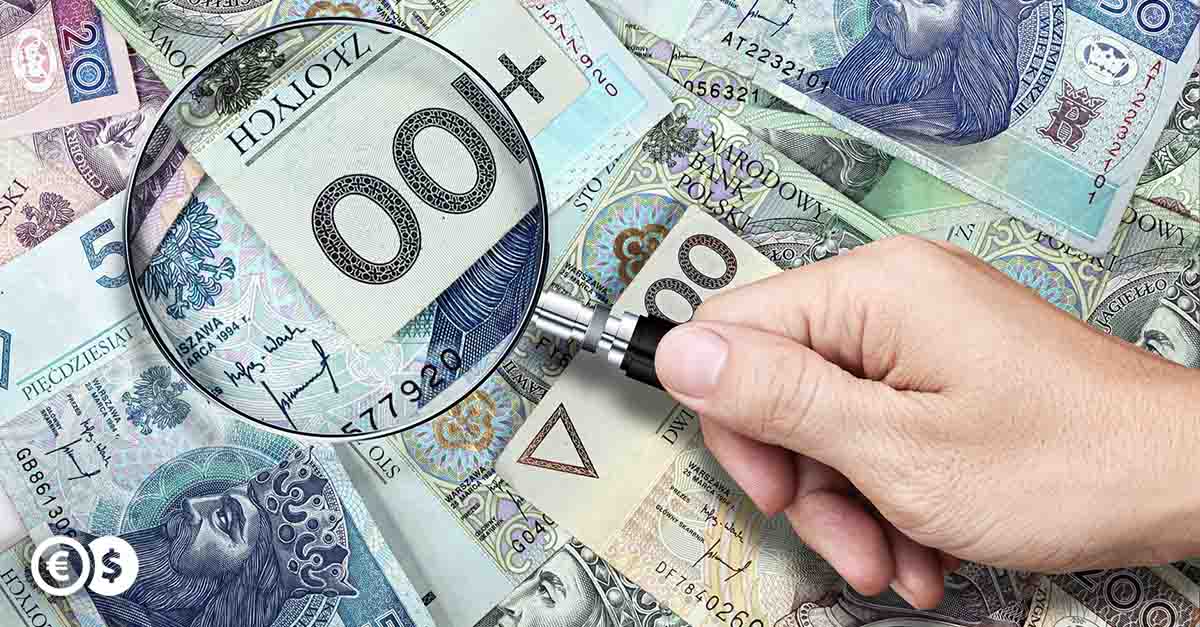The prices of goods and services are continuously changing due, for example, to the seasonality of products. However, when there is a widespread and long-term increase in shop prices, we talk about rising inflation. How exactly does this phenomenon work? Here is everything you need to know about it.

What is inflation?
Inflation is an increase in the prices of products and services. It is directly translated into a decrease in the purchasing power of money. To put it simply - if you have 500 EUR at your disposal, you can buy fewer products for that amount than, for example, a year or a month earlier, when inflation was lower. As inflation rises, the value of money decreases.
Usually, we measure inflation compared to the same period of the previous year. In this way, the impact of seasonal, recurring price fluctuations is removed from the equation.
For the typical citizen, therefore, the current level of inflation may be more challenging to perceive. Especially since, as humans, we tend to notice higher prices more. When they fall, we don't necessarily realise it. We focus particularly hard on fuel prices, which we see and easily compare at every turn. We tend to feel inflation most when we see the prices of products we buy with cash, such as bread, fuel or even bus tickets. By focusing on these categories, we may even get the impression that inflation is higher than it actually is. In such cases, we often speak of so-called anecdotal evidence of inflation, which then does not have to be confirmed by the economy in general.
On the other hand, we are less likely to notice an increase in the prices of products and services we buy less frequently or those that automatically debit our account. These may be, for example, foreign trips, which we usually go on 1-2 times a year, or even telephone bills, which are regularly paid from our account.
Inflation is an economic index that should not be perceived as abnormal or bad. When it remains at a low level, it is actually a positive phenomenon. Only its rapid increase can have negative consequences - a marked rise in shop prices, a fall in the purchasing power of money, or the country's economic problems.

How is inflation calculated?
The scale of price growth of goods and services in a given country is most often calculated based on the CPI (Consumer Price Index). This is nothing more than a special basket of products and services corresponding to the needs of an average household. It may change over the years to reflect current trends.
In many economies, especially developing ones, food and energy prices have the strongest impact on household budgets. They are also the most volatile and changeable. Therefore, so-called core inflation, which excludes the most problematic categories, is often more important than CPI inflation. Its indexes are a more accurate reflection of the price processes taking place in the economy.
The PPI (Producer Price Index), which tells us about average prices in the industry, may also be taken into account. It may have an anticipatory nature: eventually, an increase in production costs will translate into prices on shop shelves over time. The wholesale price index published in some countries (e.g. the United States) is of similar importance.
The inflation basket is determined using surveys of households. It most often includes products and services from the following categories:
- food and non-alcoholic beverages,
- alcoholic beverages and tobacco products,
- clothing and footwear,
- housing use and energy carriers,
- household equipment, household management,
- health,
- transport,
- communications,
- culture and recreation,
- education,
- restaurants and hotels,
- other goods and services.
The individual categories in the shopping basket are given a specific weight to correspond to the actual expenditure on a given product or service. Much more money is spent on energy or food than on, for example, entertainment and culture, which is why some items in the basket are more important than others. Therefore, we may say that although each of us has a different spending pattern and different habits, the annually recalculated inflation basket is intended to reflect the consumption profile of the average householder.
What factors cause inflation?
Where does inflation come from, and why do prices in shops start to rise? There may be many explanations. They can be divided into external and internal. The former depends on global trends and has nothing to do with a country's economic situation. Of course, this mainly concerns the prices of raw materials and food. They are prone to so-called supply shocks. In recent years, such a phenomenon was triggered by the COVID-19 pandemic, which resulted in the unavailability of many components for production, including cars. We are currently experiencing another example of this - Russia's invasion of Ukraine translated into sharp increases in fuel and grain prices, which further intensified price pressure.
The most important local factors include, above all, the current state of the country's economy and the actions of the government and monetary authorities related to the money supply. In this case, we speak of demand-side sources of inflation. A fundamental principle of economics comes into play here: the stronger the consumption, the stronger the price increases. This means that accelerating inflation can be supported by high wage growth and low unemployment or social policies that increase available household income.
The cost of credit, which is derived from central bank policy, is essential. The more money that comes into the market, for example, through central bank printing or the purchase of securities, the greater the risk of high inflation.
Inflation of a demand-driven nature is apparent, particularly in core prices, and it is for this reason, the central bank closely monitors them. Its task is to keep inflation in check and prevent the economy from overheating. The monetary authority and its policies are designed to smooth economic fluctuations: to slow down economic growth when it is too fast or unsustainable and prevent crises leading to high unemployment, which can have undesirable social and demographic consequences.
Between these two groups of factors, there are multiple interactions. For example: with a robust labour market, rising food prices can result in escalating wage demands. With low unemployment, these will be met. As a result, although the initial impulse came from outside, demand-driven inflation eventually intensifies. Another example would be the gradual increase in fuel prices, which over time results in an increase (anchoring) of so-called inflationary expectations. In such a situation, we behave as if further price increases were a foregone conclusion, which leads to a self-fulfilling prophecy effect.
The prices of raw materials and energy also play big roles. Sudden increases in the cost of electricity or fuel are bound to increase the cost of producing goods and services. This is ultimately felt by citizens, who pay more for basic goods such as bread. An unbalanced state budget is also one of the driving forces behind rising prices. This situation occurs when budget expenditure exceeds budget revenue.
So-called imported inflation is also an interesting phenomenon. It occurs when the prices of goods imported by a given country increase. As a result, the production costs also go up, which translates directly into higher prices in shops. The currency's strength is also important in this field: a weakening of the currency automatically translates into higher prices of imported goods. This effect is even stronger the more rapid the currency depreciation. The opposite is true: a stronger currency means lower prices of goods, which is especially important in the case of food and fuel prices, categories that are beyond our control.
What are the effects of inflation?
For the typical citizen, inflation has a clear association with something bad and is identified only with price increases in shops. In reality, this phenomenon is completely normal and sometimes even positive. The prerequisite, however, is that its rate is kept at an appropriate level.
Such conditions make the economy more productive, people's wages rise, and investment activity is more profitable. The purchasing power of money is also maintained.
However, when inflation gets out of hand, people only talk about its negative effects. The most noticeable is, of course, the reduced purchasing power of money. Citizens can buy fewer goods and services for the same salary as before. Weaker consumption means weaker economic growth, problems for some companies and a worsening of the labour market.
It is also bad for savings, which simply lose value. When the economic situation is unfavourable, new investments are also less likely to be made and running a business is more difficult.
Those in society who are hit very hard by high inflation are also the borrowers. Loans have become significantly more expensive. Banks are raising margins to secure their business in uncertain times. They may also be raising the minimum down payment for mortgages. This means lower creditworthiness for many of us.
Types of inflation
Inflation can be divided according to various criteria. One of the most common is the division according to its rate. In this case, we distinguish:
- deflation - this is negative inflation. It occurs when the prices of goods and services fall and the purchasing value of money rises. After a certain time, citizens can buy more for the same amount of money. This phenomenon is unfavourable because, among other things, it reduces the profitability of production and hampers economic growth. Households put off purchases for the future.
- moderate inflation - is the most desirable situation. For each economy, the level is an individual matter.
- galloping inflation - we call it when the annual value of the index reaches a two- or three-digit figure.
- hyperinflation - is the worst of all possible variants. It occurs when the monthly price increase exceeds 150%.



